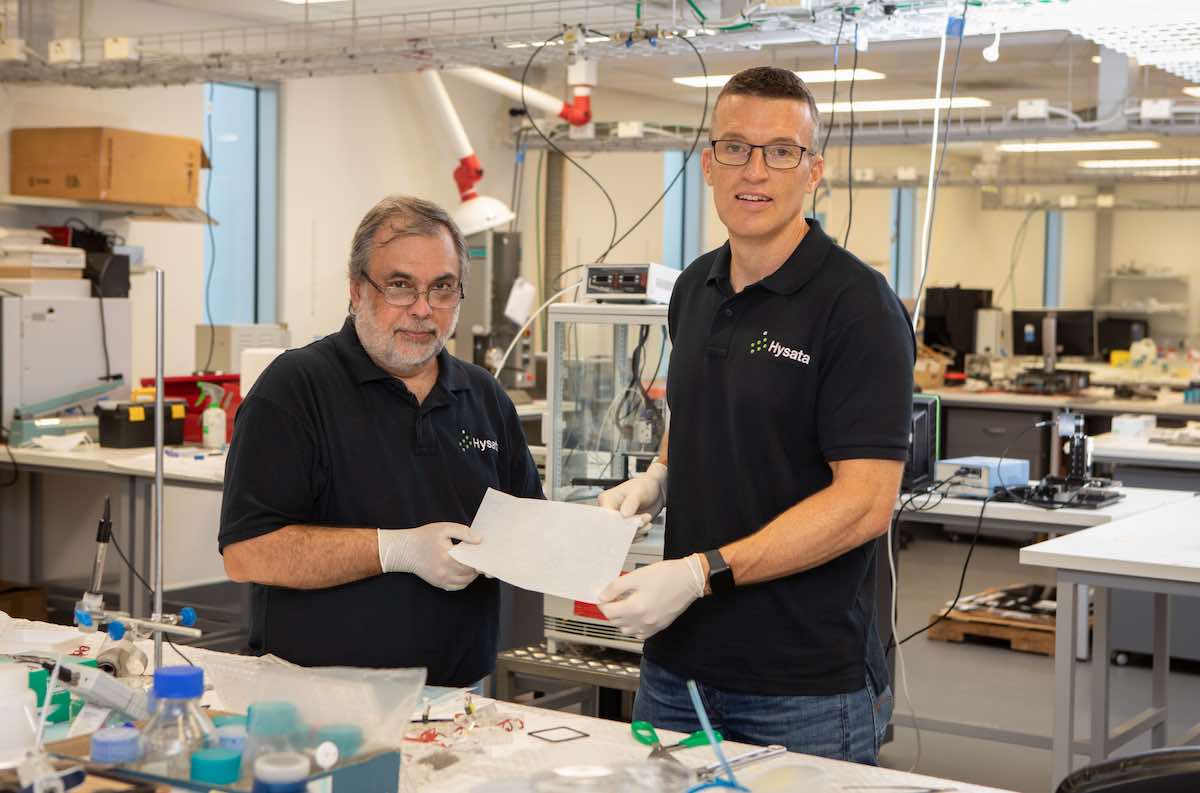A green hydrogen researcher is the latest recipient of the Australian Research Council’s (ARC) Industry Laureate Fellowship, for his work on high-efficiency electrolysers.
University of Wollongong (UOW) electrochemist Gerhard Swiegers will take a $3.7 million grant back to the lab to continue building on technology that, in 2021, was spun out into a company called Hysata.
“This project will support the development of a sovereign Australian hydrogen manufacturing capacity with accompanying decarbonisation and employment benefits,” Swiegers said in a statement.
“It is estimated that green hydrogen will provide 15 to 20 per cent of global energy demand in 2050, worth $2.5 trillion. We believe this new technology can help Australia capture a large share of that market.”
The “capillary-fed electrolysis” (CFE) cell technology can deliver green hydrogen at 95 per cent efficiency (its “stack” is 98 per cent, but this translates to 95 per cent with balance of plant). The current global average is around 75 per cent or less.
Hysata is the industry partner for Swiegers’ ongoing work, and with the backing of Bluescope and Vestas is scaling up the CFE electrolyser which uses 20 per cent less energy than existing technologies.
It was developed by teams from ARC Centre of Excellence for Electromaterials Science (ACES) and UOW’s Intelligent Polymer Research Institute, led by chemical catalysis and characterisation expert Swiegers.
Swiegers has founded six startups and owns more than 50 patents. He has been publishing papers on a solution to the difficulty and cost of producing green hydrogen since the 2000s, when he was also working on a barcode-alternative of an RFID tracking system.
Capillary-action explained
The patented CFE electrolysis cell updates century-old electrolyser technology by swapping out electrodes dipped into a pool of alkaline water and replacing them with a capillary-like method.
An electrolyte is continuously sucked up towards the electrodes by a “porous, hydrophilic, inter-electrode separator”, according to Nature.
By mimicking the way plants absorb water, the hydrogen and oxygen molecules can be split without forming bubbles in the liquid that increase electrical resistance and reduce efficiency.

Swiegers’ goal for the CFE technology is ease of manufacturing, meaning Hysata is eschewing expensive materials such as platinum and iridium group metals that must be used in conventional electrolyser technologies, and have reduced the amount of water needed from 10,000 litres per megawatt (L/MW) to 400 L/MW.
Hysata expects to be able to produce 1 million tons of green hydrogen a year using 11.3 gigawatts (GW) of renewable energy and 6 GW of electrolysers, compared to 14.3GW of renewable energy sources and 7.6GW of electrolysers required by conventional systems.
“Green hydrogen will be essential for us to achieve net zero,” Swiegers said.
“Our electrolyser, being commercialised by Hysata, has ultra-high energy efficiency, consuming about 20 per cent less energy with accompanying higher yields of green hydrogen from renewable sources.
“This will reduce the cost of producing green hydrogen to well below $2 a kilogram, making it cost-competitive with fossil fuels.”
The federal budget allocated $2 billion to the nascent hydrogen industry last week in the form of production credits for two to three big projects and funding for research into areas such as origin verification.










